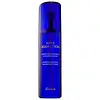What's inside
What's inside
 Key Ingredients
Key Ingredients

 Benefits
Benefits

 Concerns
Concerns

 Ingredients Side-by-side
Ingredients Side-by-side

Water
Skin ConditioningGlycerin
HumectantButylene Glycol
HumectantMethyl Gluceth-20
HumectantPentylene Glycol
Skin ConditioningPhenoxyethanol
PreservativeMaltitol
HumectantPPG-26-Buteth-26
Skin ConditioningPEG-7 Glyceryl Cocoate
EmulsifyingPEG-40 Hydrogenated Castor Oil
EmulsifyingParfum
MaskingAcrylates/C10-30 Alkyl Acrylate Crosspolymer
Emulsion StabilisingSodium Hyaluronate
HumectantSodium Hydroxide
BufferingMenthoxypropanediol
MaskingCitronellol
PerfumingMalva Sylvestris Extract
AstringentNymphaea Odorata Root Extract
RefreshingGeraniol
PerfumingHexyl Cinnamal
PerfumingViola Tricolor Extract
EmollientSodium Carrageenan
Emulsion StabilisingBenzyl Salicylate
PerfumingLinalool
PerfumingMaris Sal
Skin ConditioningBHT
AntioxidantEthylhexylglycerin
Skin ConditioningCI 14700
Cosmetic ColorantCI 42090
Cosmetic ColorantTocopherol
AntioxidantWater, Glycerin, Butylene Glycol, Methyl Gluceth-20, Pentylene Glycol, Phenoxyethanol, Maltitol, PPG-26-Buteth-26, PEG-7 Glyceryl Cocoate, PEG-40 Hydrogenated Castor Oil, Parfum, Acrylates/C10-30 Alkyl Acrylate Crosspolymer, Sodium Hyaluronate, Sodium Hydroxide, Menthoxypropanediol, Citronellol, Malva Sylvestris Extract, Nymphaea Odorata Root Extract, Geraniol, Hexyl Cinnamal, Viola Tricolor Extract, Sodium Carrageenan, Benzyl Salicylate, Linalool, Maris Sal, BHT, Ethylhexylglycerin, CI 14700, CI 42090, Tocopherol
Water
Skin ConditioningCoco-Caprylate/Caprate
EmollientGlycerin
HumectantSimmondsia Chinensis Seed Oil
EmollientCetyl Alcohol
EmollientLactococcus Ferment Lysate
Skin ConditioningCetyl Phosphate
EmulsifyingSqualane
EmollientNiacinamide
SmoothingArginine
MaskingCrambe Abyssinica Seed Oil
Skin ConditioningBenzyl Alcohol
PerfumingTocopherol
AntioxidantAscorbyl Tetraisopalmitate
AntioxidantCarbomer
Emulsion StabilisingSodium Dehydroacetate
PreservativeCaprylic/Capric Triglyceride
MaskingHibiscus Abelmoschus Seed Oil
MaskingGlycogen
HumectantDehydroacetic Acid
PreservativeSantalum Album Wood Oil
PerfumingPistacia Lentiscus Gum
MaskingLactic Acid
BufferingSodium Chloride
MaskingSodium Benzoate
MaskingBeta-Carotene
Skin ConditioningXanthophylls
Skin ConditioningCitric Acid
BufferingHelianthus Annuus Seed Oil
EmollientRosmarinus Officinalis Leaf Extract
AntimicrobialSodium Hydroxide
BufferingFarnesol
PerfumingWater, Coco-Caprylate/Caprate, Glycerin, Simmondsia Chinensis Seed Oil, Cetyl Alcohol, Lactococcus Ferment Lysate, Cetyl Phosphate, Squalane, Niacinamide, Arginine, Crambe Abyssinica Seed Oil, Benzyl Alcohol, Tocopherol, Ascorbyl Tetraisopalmitate, Carbomer, Sodium Dehydroacetate, Caprylic/Capric Triglyceride, Hibiscus Abelmoschus Seed Oil, Glycogen, Dehydroacetic Acid, Santalum Album Wood Oil, Pistacia Lentiscus Gum, Lactic Acid, Sodium Chloride, Sodium Benzoate, Beta-Carotene, Xanthophylls, Citric Acid, Helianthus Annuus Seed Oil, Rosmarinus Officinalis Leaf Extract, Sodium Hydroxide, Farnesol
Ingredients Explained
These ingredients are found in both products.
Ingredients higher up in an ingredient list are typically present in a larger amount.
Glycerin is already naturally found in your skin. It helps moisturize and protect your skin.
A study from 2016 found glycerin to be more effective as a humectant than AHAs and hyaluronic acid.
As a humectant, it helps the skin stay hydrated by pulling moisture to your skin. The low molecular weight of glycerin allows it to pull moisture into the deeper layers of your skin.
Hydrated skin improves your skin barrier; Your skin barrier helps protect against irritants and bacteria.
Glycerin has also been found to have antimicrobial and antiviral properties. Due to these properties, glycerin is often used in wound and burn treatments.
In cosmetics, glycerin is usually derived from plants such as soybean or palm. However, it can also be sourced from animals, such as tallow or animal fat.
This ingredient is organic, colorless, odorless, and non-toxic.
Glycerin is the name for this ingredient in American English. British English uses Glycerol/Glycerine.
Learn more about GlycerinSodium Hydroxide is also known as lye or caustic soda. It is used to adjust the pH of products; many ingredients require a specific pH to be effective.
In small amounts, sodium hydroxide is considered safe to use. However, large amounts may cause chemical burns due to its high alkaline.
Your skin has a natural pH and acid mantle. This acid mantle helps prevent harmful bacteria from breaking through. The acid mantle also helps keep your skin hydrated.
"Alkaline" refers to a high pH level. A low pH level would be considered acidic.
Learn more about Sodium HydroxideTocopherol (also known as Vitamin E) is a common antioxidant used to help protect the skin from free-radicals and strengthen the skin barrier. It's also fat soluble - this means our skin is great at absorbing it.
Vitamin E also helps keep your natural skin lipids healthy. Your lipid skin barrier naturally consists of lipids, ceramides, and fatty acids. Vitamin E offers extra protection for your skin’s lipid barrier, keeping your skin healthy and nourished.
Another benefit is a bit of UV protection. Vitamin E helps reduce the damage caused by UVB rays. (It should not replace your sunscreen). Combining it with Vitamin C can decrease sunburned cells and hyperpigmentation after UV exposure.
You might have noticed Vitamin E + C often paired together. This is because it is great at stabilizing Vitamin C. Using the two together helps increase the effectiveness of both ingredients.
There are often claims that Vitamin E can reduce/prevent scarring, but these claims haven't been confirmed by scientific research.
Learn more about TocopherolWater. It's the most common cosmetic ingredient of all. You'll usually see it at the top of ingredient lists, meaning that it makes up the largest part of the product.
So why is it so popular? Water most often acts as a solvent - this means that it helps dissolve other ingredients into the formulation.
You'll also recognize water as that liquid we all need to stay alive. If you see this, drink a glass of water. Stay hydrated!
Learn more about Water